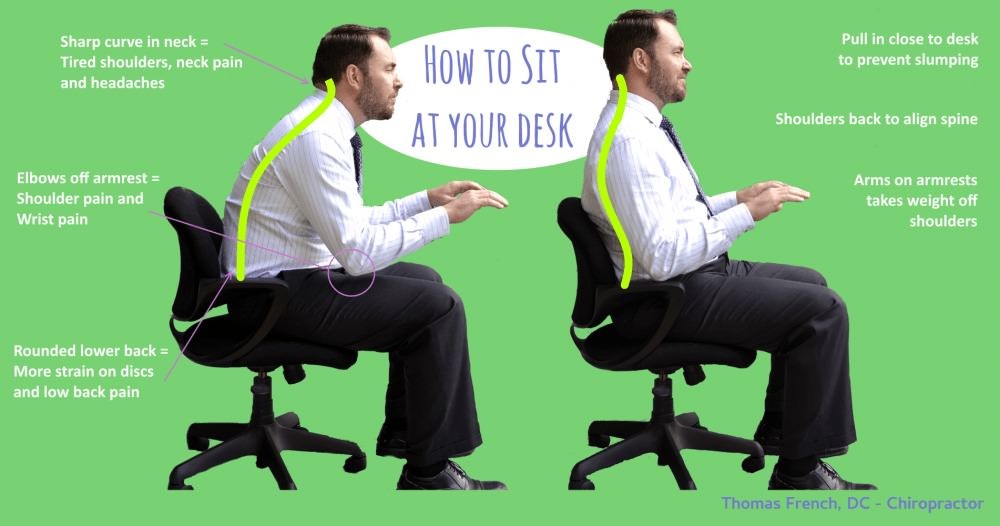Posture is often thought of as something cosmetic, a matter of how straight someone stands or how polished they appear in a professional setting. In reality, posture plays a far deeper role in overall health and well-being. The way we carry ourselves affects everything from muscle balance and joint function to energy levels and even mood. Poor posture is one of the most common contributors to chronic pain, particularly in the neck, back, and shoulders, and it can develop gradually from hours spent at desks, hunched over phones, or carrying stress physically. The encouraging news is that improving posture is not only possible but also transformative, and it doesn’t require drastic measures. Small, consistent adjustments and awareness can significantly reduce pain and improve long-term comfort.
One of the biggest reasons posture matters so much is because of how it influences alignment. The human body is designed to distribute weight evenly when standing and moving. When posture slips—shoulders rounding forward, spine curving excessively, or head jutting out—the body compensates, often putting extra strain on certain muscles or joints. Over time, this imbalance leads to discomfort, fatigue, and eventually pain. For example, when someone spends long hours leaning over a laptop, the neck muscles strain to support the head’s forward position, leading to tension headaches and stiffness. Similarly, sitting with slouched shoulders compresses the lower back, increasing the risk of chronic lumbar pain. Recognizing these patterns is the first step to understanding why posture is not simply about appearance but about function.
Improving posture begins with cultivating awareness. Many people are unaware of how they sit or stand throughout the day until discomfort sets in. Developing mindful check-ins, such as noticing whether shoulders are relaxed or whether weight is evenly distributed when standing, builds this awareness gradually. Professionals often find that simply adjusting their desk setup—ensuring screens are at eye level, feet rest flat on the ground, and chairs support the lower back—makes a noticeable difference. These small environmental adjustments remove unnecessary strain and encourage the body into more natural alignment.
Movement also plays a crucial role in preventing posture-related pain. The body is not designed for extended stillness, yet many modern routines involve hours of sitting without interruption. Standing periodically, stretching, or walking for even a few minutes resets the body and reduces the buildup of tension. Incorporating simple stretches into daily life, such as opening the chest to counteract rounded shoulders or gently rolling the neck to relieve stiffness, helps muscles return to balance. Professionals who integrate these practices into their routines often find they not only feel better physically but also return to their work more energized and focused.
Strengthening key muscle groups is another important aspect of posture improvement. Weak core muscles, for instance, make it harder to support the spine, leading to slouching or overcompensation in the back. Similarly, weak upper back muscles allow shoulders to round forward, contributing to discomfort. Exercises that build core stability and strengthen the back and shoulders provide the foundation needed to maintain better posture without constant effort. It is less about holding a rigid, military-like stance and more about developing the strength to sustain alignment comfortably. Over time, stronger muscles naturally hold the body in healthier positions, reducing reliance on conscious reminders.
Beyond physical alignment, posture also connects to energy and mental state. Research has shown that sitting upright can improve alertness and even elevate mood, while slouched posture is associated with lower energy and decreased confidence. This connection is especially relevant in professional environments, where body language influences perception. Maintaining good posture in meetings, presentations, or daily interactions not only reduces physical discomfort but also projects confidence and attentiveness. In this way, posture serves as both a health practice and a professional asset, reinforcing the idea that caring for the body enhances both personal well-being and workplace performance.
Technology use presents one of the biggest challenges to posture today. The constant downward gaze at smartphones or tablets, often referred to as “tech neck,” places significant strain on the cervical spine. Over time, this repetitive strain can lead to persistent pain and even structural changes in the spine. To combat this, small adjustments such as holding devices closer to eye level or setting reminders to shift positions can be remarkably effective. Awareness of these habits and gentle corrections throughout the day help mitigate the long-term consequences of constant device use.
Importantly, improving posture is not about achieving perfection but about making gradual, sustainable changes. Expecting to suddenly sit or stand flawlessly all day is unrealistic and can even cause unnecessary tension. The more effective approach is to practice small adjustments consistently, creating a natural rhythm where the body begins to default to healthier positions. As awareness increases and supporting muscles strengthen, posture improvement becomes less of a conscious effort and more of a habit integrated into daily life.
Preventing pain through better posture is ultimately about respecting the body’s natural design. By aligning the spine, strengthening supportive muscles, and moving regularly, individuals can alleviate the strain that so often leads to discomfort. The payoff is not only the absence of pain but also greater energy, focus, and confidence in daily life. For professionals whose days are filled with meetings, deadlines, and high levels of responsibility, posture becomes more than a physical concern—it becomes a strategy for sustaining performance and well-being over the long term. With consistency and awareness, small adjustments add up to lasting comfort, making posture one of the most practical and impactful investments in health.





